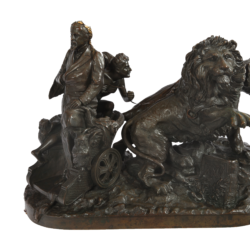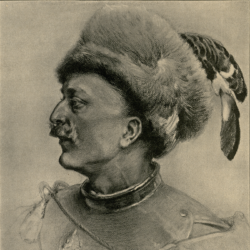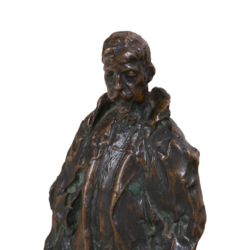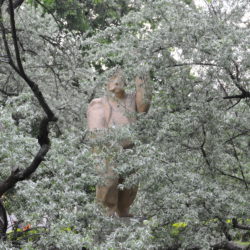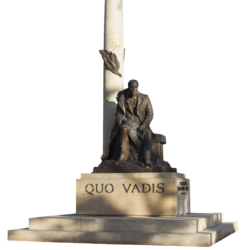
Memorials after 1945
Sienkiewicz memorials unveiled after 1945, in the communist era, included those in Słupsk (1960, a genuinely imposing one), Bydgoszcz, Częstochowa (1973, located in front of Sienkiewicz Secondary School No. 4 and irreverently dubbed “Dzerzhinsky” because of its heavy, Soviet-like design), and in Płońsk (1978, once again in front of a secondary school and sponsored by its former students). His busts also stand in Bisztynek (1965, called “Mr. Head” and besmirched to have originated as a portrait of Dzerzhinsky as well[1]), Włocławek, Szczytno (the 1960s), and Białystok (1987). The memorial in Piotrków Trybunalski took the form of a sandstone rock. As exemplified in Bydgoszcz, it was easier to restore a memorial on its original site, especially with the patronage from a senior local official – in that case, Aleksander Schmidt, Chairman of the National Council in Bydgoszcz. Monuments were more likely to be built in towns rather than cities, not in the province capitals but rather in the county seats. Częstochowa, Szczytno, and Płońsk were all connected with the life and work of Sienkiewicz. A recurrent motif was the promotion of Polishness. It was expressed through a number of 1960s representations vilifying The Teutonic Knights, the symbol of German occupation, or by replacing earlier German monuments in the Recovered Territories, for example, substituting the portraits of Sienkiewicz for the statues of Siegfried fighting a dragon in Bisztynek[2] and of Otto von Bismarck in Słupsk. But does that mean that no major city in Poland could boast a memorial erected to the writer?

